In the comprehensive world of search engine optimization, one of the best ways to attract traffic to your website and increase your ranking on SERPs is to attain backlinks. Having lots of backlinks from different sources, such as social media, other websites, blogs, etc., can be a benefit to your website, gaining organic traffic and more customers.
However, when it comes to these backlinks, the quality of those is also crucial. A positive and qualified backlink can increase your rankings on search engine results, while an unqualified or untrustworthy one can decrease the credibility of your website. In that sense, the Google Search Console Disavow Tool is one of the best tools available on the market to manage your backlinks, allowing or disavowing them. In today’s article, we will discuss why and how to disavow link, its benefits and reasons to do so, and the steps you can take to protect your website’s reputation among search engines.
What Does “Disavow” Mean In SEO?
In the Oxford dictionary, disavow means to state publicly that you have no knowledge of something or that you are not responsible for something. If we are going to think about it for SEO’s sake, it can be similar to this definition in a more specific context. To Disavow link in SEO basically means asking search engines not to consider some backlinks you have while they are deciding on your rankings. In other words, search engines overlook some backlinks you have while ranking you on SERPs.
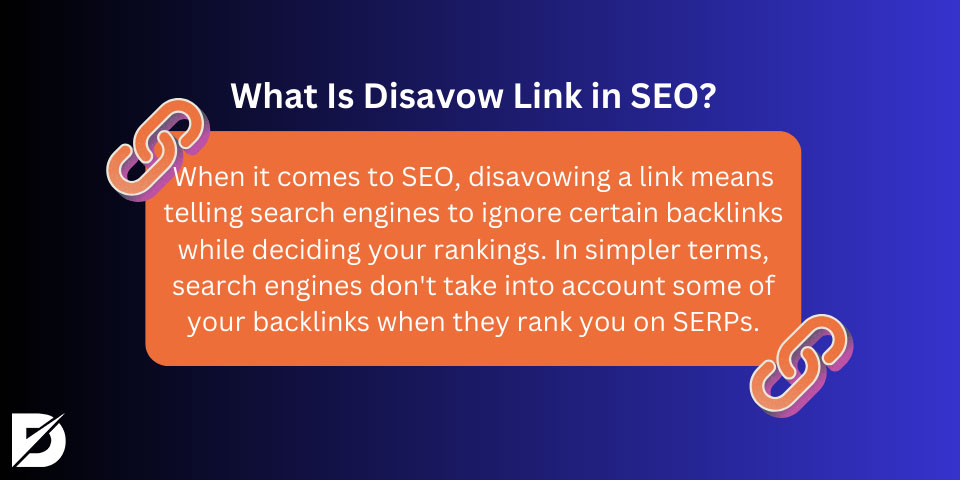
So, to be able to do that, you might need a disavow links tool to inform search engines. Since Google is the biggest search engine today, the Google Search Console Disavow Tool might be your biggest help. The disavow links tool helps you to reach Google about which backlinks you don’t want to be considered by submitting a disavow list to Google. Of course, this step does not guarantee they will one hundred percent accept your request, but there is a chance they will do so.
However, it is also important to note that overlooking some backlinks does not necessarily mean that they are ignored forever. Unfortunately, they continue to be on your backlink profile. Nonetheless, the disavow links tool helps you manage those ‘bad backlinks’ to your website, thus protecting its reputation.
Why You Might Want to Disavow Links?
As we said earlier, the quality of the backlinks to your website is crucial to determining the ranking. There are basically two types of backlinks: The good and the bad. Good backlinks are the ones that rank your website in the ranking list, while the bad ones (spammy, from bad sources, etc.) can negatively affect your website through algorithms, penalties, or manual actions.
Since Google launched its PageRank algorithm, backlinks have become one of the most influential elements in ranking websites. Most people are aware of this, and there might be some who exploit this to undermine their competitors. This is called the “blackhat” technique embraced by competitors to harm other sites. Those people can create backlinks from spammy or toxic websites to your site and try to decrease the rankings of their competitors. To avoid that, you can disavow backlinks you consider harmful. However, this is not the only reason:
- Decreasing traffic – if your website suffers from a sudden change in the organic traffic it attracts, and your backlink profile looks suspicious, you might want to disavow backlinks.
- Just for the protection – maybe everything is going fine with your website, but you want to protect it to prevent other harmful backlinks. For example, let’s say you used a link-building tool to increase your backlink profile, and now you regret it because the links look shady. Then, you can disavow links to diminish the effect of those backlinks.
With those three scenarios in mind, you might want to consider using Google Search Console Disavow Tool to decrease the amount of spammy backlinks you have. Believe us, you might get shocked when you see those in the tool itself!
How Can You Identify Bad Backlinks?
Even though the process of disavow links might be easy, deciding on which links are bad backlinks and should be disavowed can be harder than expected. The main reason to disavow link is them being spammy or low-quality links. Since both of them can negatively affect the user experience and your credibility. You might be wondering how I can understand which backlinks are bad and which are not. Here are a few categories you can be cautious about:
- Obvious spam websites
- Links appearing in spam comments
- Websites that are just found for backlinking
- Backlinks from websites that come from other than your target country or region
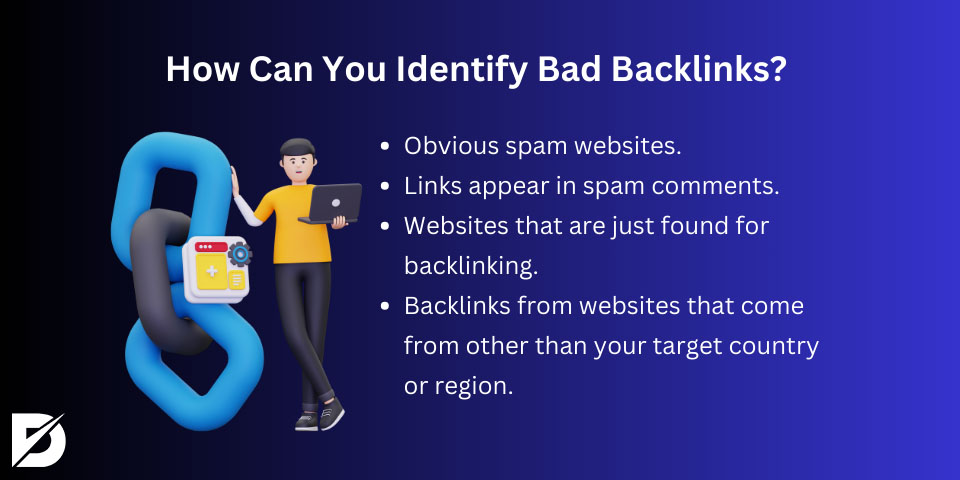
If you have found which websites are spammy or toxic, you have two options to disavow link.
- You can disavow a specific URL. For example, you can disavow website.com/spammy-content. This way, this link won’t affect your ranking, but website.com/good-content will continue to appear.
- Another option is disavowing a whole domain. For example, you can target website.com wholly as a domain and disavow any links from there.
If you are still unsure whether the link you get suspicious is a bad backlink, we can recommend some SEO tools for you so that they can list the spammy links for you. These tools can give you access to your website’s backlink profile. You can filter them under the ‘spammy’ section and easily disavow backlinks there. Here are some SEO tools you can use:
- Google Search Console
- Ahrefs Backlink Checker
- Semrush Backlink Audit (read our Semrush review to learn more)
- Moz Link Explorer
- WebCEO toxic link checker
When Should You Create a Disavow File?
Google has stated that not every website needs a disavow list, and there should be some specific situations to start that process. So, we prepared a list of those situations for you to decide when you should create a disavow list and a file:
Manual Action
Manual action is the biggest and most important situation in which you need to take action immediately. If your website is hit with a manual penalty due to your link-building practices, you definitely need to disavow backlinks to remove the penalty.
If your website is connected to Google Search Console, you can see there if you got a penalty or not and if you have one, you can analyze your links from Google Search Console to find which links are violating Google’s guidelines. Once you find the link that is detrimental to your website, you can contact the owner of the link and request them to remove the backlink they have to your website. If they do not accept that solution, then you may resort to disavow link.
Once you remove backlinks that are spammy or offending, you can click on the ‘Request Review’ in the manual action report and ask them to remove the penalty since you solved the problem.
Link Schemes
If you consciously participated in those link schemes to attract more visitors to your websites, or someone you hired did that thing, you might want to disavow backlinks coming from there. In general, these are the links that are paid for. Hence, they violate Google’s guidelines.
Directories
In the past, it was a very popular thing to add profiles to all the directories that included a link to your website with your “money keyword” as the anchor text. Perhaps you or the SEO specialist you hired for this job attained some backlinks in this way. Nonetheless, you need to remove backlinks attained this way, even if they look SEO-friendly or not spammy. Removing those manually is the ideal way to get rid of those backlinks. However, if you cannot do that, maybe you should consider adding those to your disavow list.
Comments
In addition to directories, another old technique to attain backlinks was copying and pasting lots of comments under some blog posts or other websites with the brand itself. The comments were saying “the best sneaker I have ever bought”, or “you should definitely try this tomato paste” and so on. If you are guilty of one of those comments, you should consider disavow backlinks you copied and pasted like that. These can also be considered bad backlinks to hinder your growth in rankings.
What Happens When You Disavow a Backlink?
So, we have been talking about when to disavow links, why to disavow links, how to find those links, and so on. But what happens actually when you disavow backlinks? If you are thinking the same thing, you are on the correct path of the journey!
When you submit a file of disavow link to Google, it is basically requesting Google to ignore those links or domains when determining the ranking on SERPs of your website. If your request achieves successful results, the links you send won’t be counted for or against you when they are reading your website.
Since it is a request, Google has no obligation to answer or implement it immediately. However, in their documentation, they ‘suggest’ website owners submit a disavow list from Google Search Console. That means they might be actually considering those lists seriously.
If you are wondering about whether you can undo a disavow list you send or not, the answer is ‘Yes, you can!’ You can delete a Google Search Console Disavow file you sent earlier. However, we do not have enough data to show that Google immediately implements what you do. Hence, it is advisable not to experiment with backlinks when it comes to Google.
How to Disavow Links
After reading all those things, this is probably the section you’ve been waiting for. If you are looking for ways to remove backlinks with the Google Search Console Disavow Tool, here are the two important steps you need to take.
Create your disavow backlinks .txt file
- Step 1: In order to find the suspicious links to your website, you can download all the links from the Links Report Section on the Google Search console. There you need to open EXPORT EXTERNAL LINKS -> Latest Links.
- Step 2: Among those links, you can identify which ones are malign or not with the ways we mentioned above earlier.
- Step 3: To create a disavow list, you need to open a text file, which should be definitely a .txt file. There, you can write the URLs or domains you want to disavow from your website. Here are some rules for writing those URLs:
- Enter only one URL or a domain name for each line
- Domains should contain the word “domain:” For example, “domain:spamwebsite.com”
- The maximum size of the file should be 100.000 lines.
- The maximum length of a URL should be 2048 characters.
Your .txt file should look like this:
https:spammylink.com/spam-content
http:spamspam.com/bad-backlink.html
domain:onemorespammylink.com
domain:anotherspammysite.com
Submit the file via the Search Console
Once you created your disavow link file, uploading it to Google Search Console is easy.
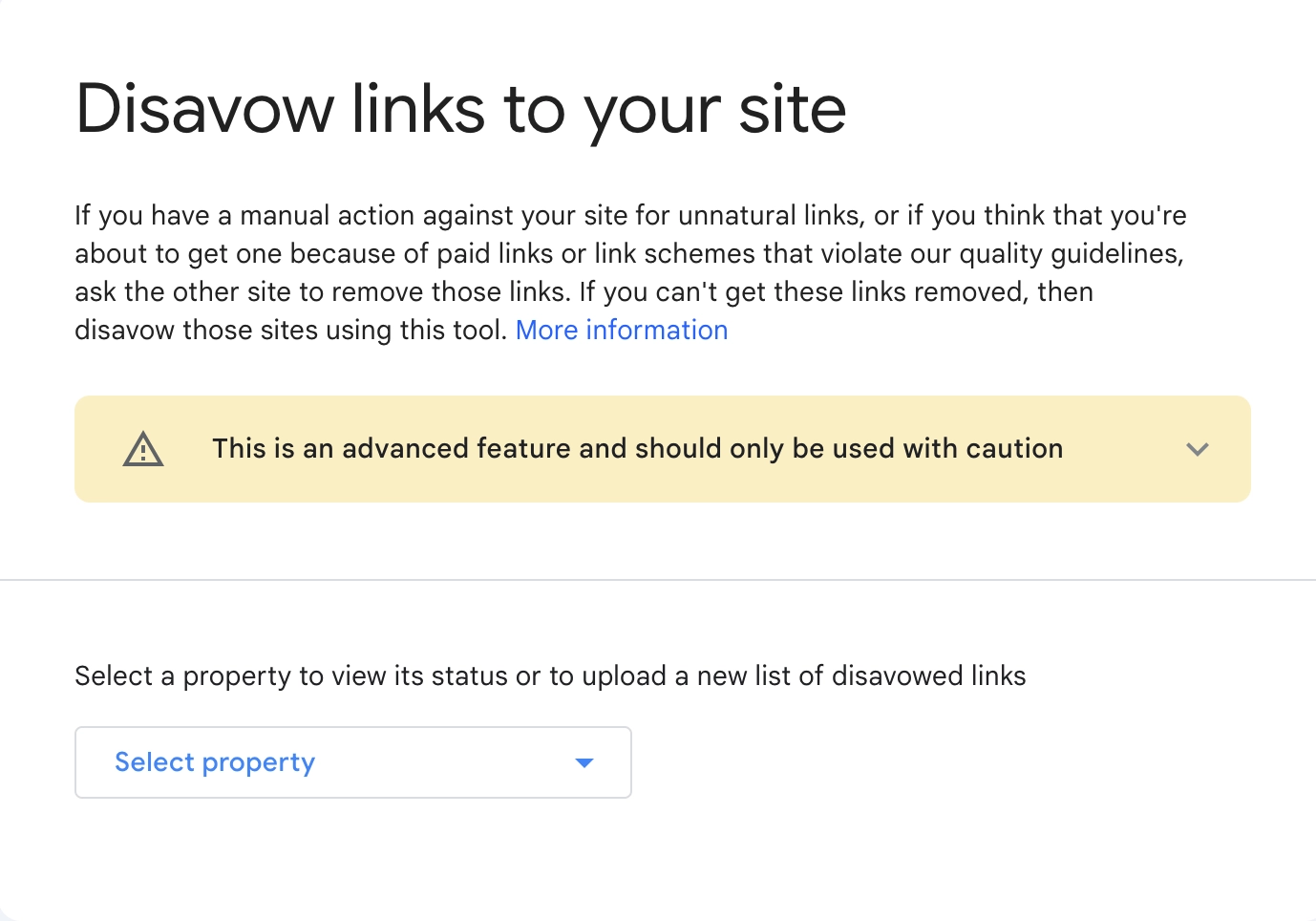
- Step 1: Open the Google Search Console Disavow Tool, or you can simply go to the https://search.google.com/search-console/disavow-links. There, you will see your active properties, which links you disavowed earlier, and you can add new files as well.
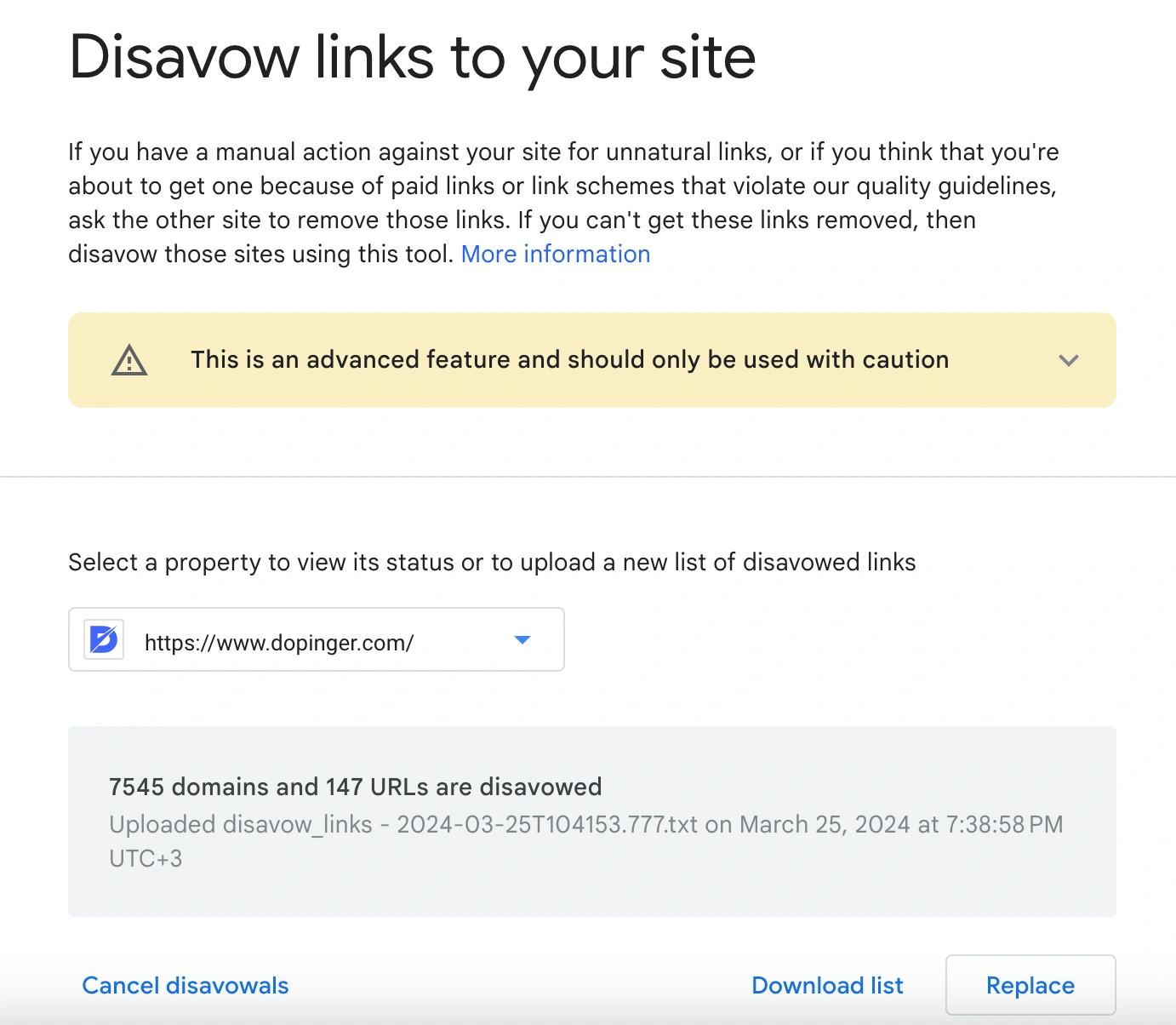
- Step 2: Upload the text file you created earlier. It is also important to remember that if you have disavowed any backlinks earlier, they will get overwritten after uploading a new one.
- Step 3: Actually, once you upload your file, your job is done. However, if you get any errors while uploading, the tool allows you to see the errors immediately and fix them.
Conclusion: Decoding SEO’s Secret Weapon
As we have covered in this extensive guide, disavowing links through Google Search Console becomes a smart move for webmasters and SEO experts. We have dived into the complex world of online link profiles, explaining everything from the definition of “disavow link” in SEO to the situations that call for disavowing links. Finding and analyzing bad backlinks is crucial because it protects your website from possible ranking setbacks.
Frequently Asked Questions About
Sign in to your Google Search Console account. Go to Google Disavow Tool page and follow the instructions. You need to upload the links you want to disavow in TXT format.
Use some tools like Moz Pro to see your backlinks that are spam or very bad quality. Do not disavow a link if it provides you a nice amount of organic traffic.
In SEO, “disavow” refers to the process of informing search engines, particularly Google, that you want to distance your website from specific backlinks. This is done by creating a disavow file that contains a list of undesirable links you wish to disassociate from your site’s ranking evaluation.
It’s advisable to create a disavow file when you identify harmful backlinks that could potentially impact your site’s SEO performance. This includes links from spammy or low-quality websites.
Once you submit a disavow file, Google takes note of your disavowal requests and adjusts its algorithmic evaluation of your website accordingly. While the disavowed links won’t directly impact your site’s rankings, it’s essential to regularly monitor and update the disavow file as needed.




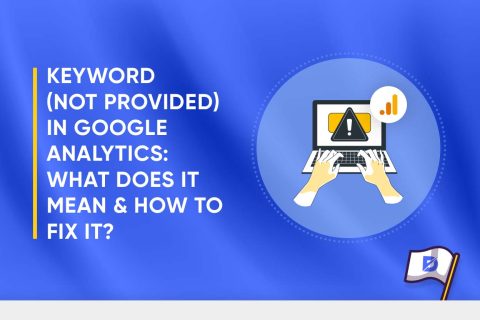
No comments to show.